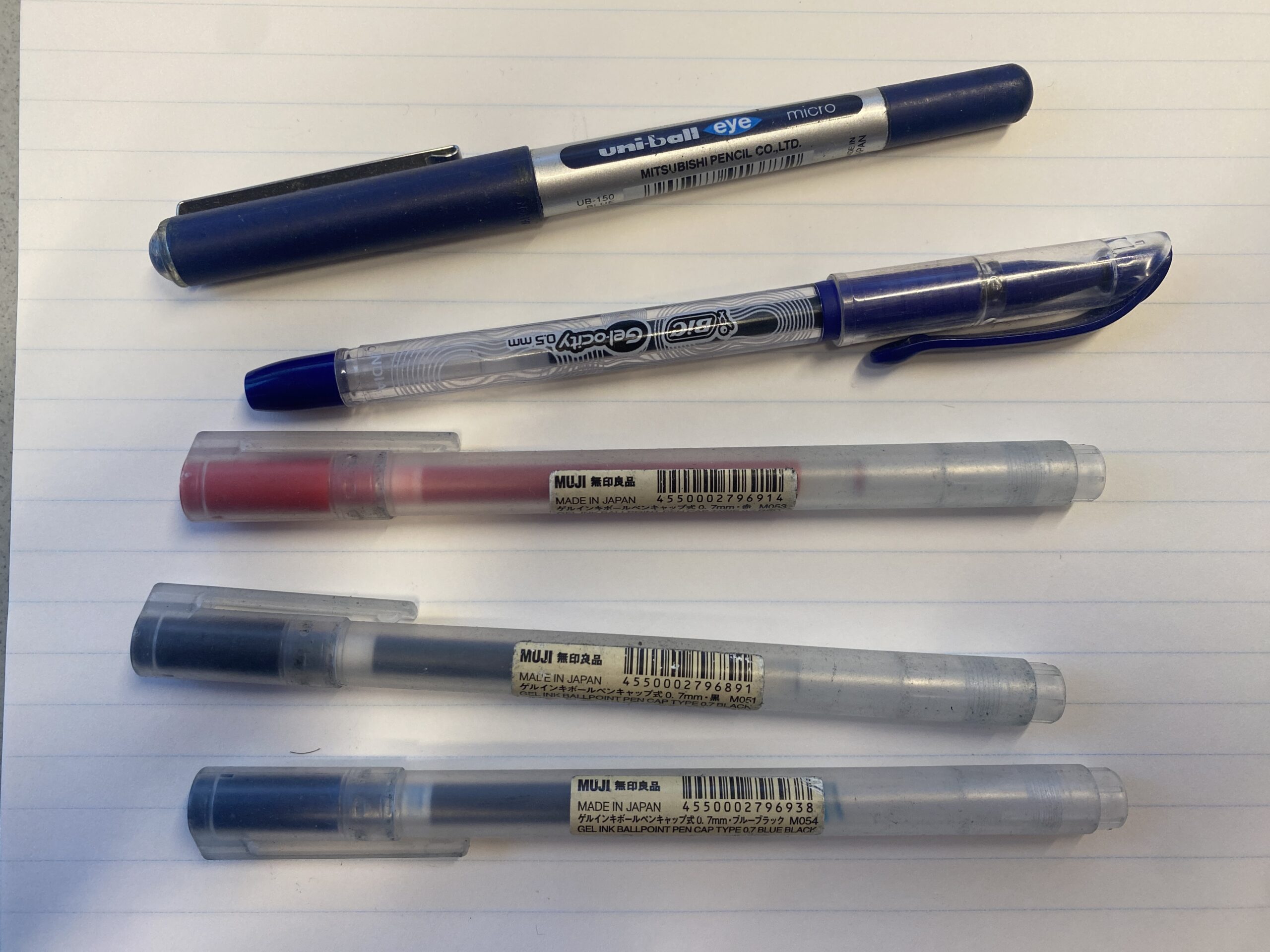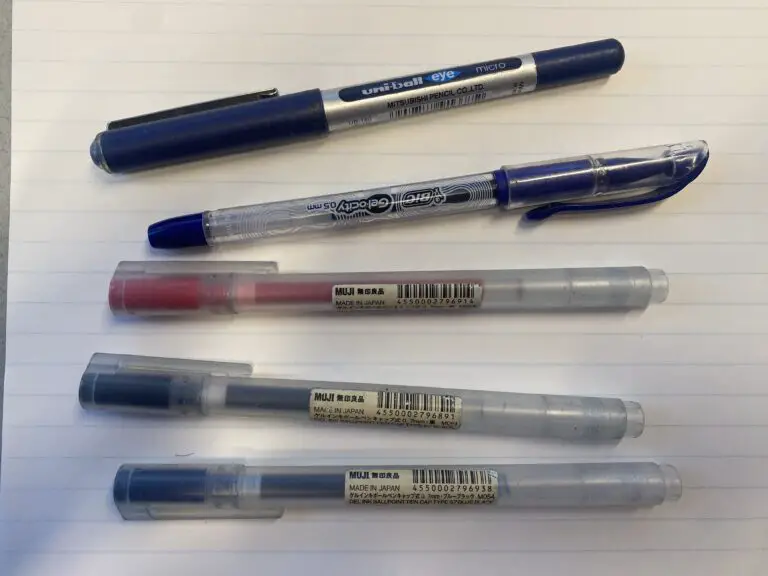Write On: How to Revive a Gel Pen
Welcome, fellow pen enthusiasts! Today, we’re diving into the delicate art of rehydrating gel pens. Whether your cherished writer has succumbed to a parched pause or you’re looking to breathe life into old favorites, these tips will guide you through reviving those smooth, gliding lines we all adore. Let’s get started!
Causes of Your Gel Pen Not Working
There are many reasons why your gel pen may have stopped working, and it’s important to figure out the root cause before trying to fix it. One of the most common problems is air bubbles getting trapped in the ink, making it impossible for the pen to write.
Another issue could be the ink drying out, especially if the pen has been unused. And let’s not forget about clogs, those pesky little buggers can cause all sorts of problems.
It’s worth noting that different gel pens may have different causes for not working. For example, a retractable pen may be more prone to clogs, while a capped pen may be more susceptible to drying out. So, it’s important to remember the type of pen you’re dealing with when troubleshooting.
Basic Troubleshooting Steps to Fix Your Gel Pen
Let’s start with the basics. Before trying any fancy tricks, it’s always a good idea to try the old “shake it up” method. Give your pen a good shake, holding the tip down so the ink doesn’t spill. This can help to dislodge any air bubbles that may be causing problems.
Next, try scribbling on paper to get the ink flowing again. This can help to break up any clogs and get the ink moving. Remove the cap and give the tip a good cleaning if you’re using a capped pen. Sometimes, the cap can be the root of the problem, so it’s worth checking to ensure it’s not just a dirty tip causing issues.
Another simple troubleshooting step is to try writing with the pen upside down. This can help to force any air bubbles to the tip of the pen, making it easier to shake them out. If you’ve been using your gel pen for a while and sitting unused, the ink may have dried out. Try running the tip under warm water or giving it a quick dip in a bowl of warm water. This can help to rehydrate the ink and get it flowing again.
It’s also worth noting that different gel pens may require different troubleshooting methods. For example, a retractable pen may require more shaking to remove air bubbles, while a capped pen may need more cleaning to remove clogs.
The type of pen you’re dealing with and adjust your troubleshooting methods accordingly. Remember, a little bit of patience and persistence can go a long way when trying to get a gel pen to work again
How to Rehydrate Gel Pens, Six Methodes
As a pen enthusiast, you know that reviving a favorite pen can be much more satisfying than simply replacing it. Here’s how you can go about rehydrating gel pens:
- Warm Water Method:
- Simple Soak: Start by trying to revive your gel pen by soaking the tip in warm water. Remove the cap, and submerge only the tip of the gel pen in warm (not hot) water for about 30 seconds to a minute. This can help dissolve dried ink near the tip, allowing the ink to flow more freely once again.
- Extended Soak: If the simple soak doesn’t work, submerge the pen tip in warm water for a few minutes. Giving it a little more time can occasionally help rehydrate tougher ink clogs.
- Steam Method:
- Hold your gel pen tip-down (without touching) over the spout of a kettle or a pot of boiling water. The steam provides a gentle heat that can help loosen dried ink. Be careful not to expose your pen to steam for too long as excessive heat might damage the pen. A few seconds should be sufficient.
- Clean the Nib:
- If soaking and steam don’t work, gently wipe the nib with a clean, damp cloth or rubbing alcohol. Sometimes, residue on the nib can prevent the pen from writing, even if the ink inside is still fluid.
- Shake the Pen:
- Try gently shaking or tapping the pen against your palm with the cap on securely. This can help move the ink towards the tip and clear minor blockages.
- Writing Motions: After attempting to rehydrate the pen, use a scribbling motion on scratch paper. Draw circles or lines to get the ink flowing. Start with gentle pressure and gradually increase it; this process helps encourage the ink to flow down to the tip.
- Apply Heat Directly:
- As a last resort, you can apply heat directly to the pen’s barrel using a hair dryer. Aim to heat the lower part of the pen (where the ink is located) rather than the nib. The warmth can reduce the viscosity of the gel ink, making it easier to flow. Be sure to rotate the pen to distribute the heat evenly, but avoid overheating, as this could damage the pen or cause the ink to leak.
Problem Prevention and Maintenance of Your Gel Pen
An ounce of prevention is worth a pound of cure, and that holds true for gel pens as well. You can do a few simple things to prevent your gel pen from not working in the first place. One of the most important things is to store your gel pen properly. Keep it in a cool, dry place, away from extreme temperatures and direct sunlight. This will help prevent the ink from drying out and ensure that your pen is ready to go when needed.
Another key to preventing gel pen issues is to use them regularly. A pen that sits unused for long periods is more likely to have problems with clogging or dried ink problems. So, make sure to use your gel pen regularly to keep the ink flowing and prevent clogs from forming.
Another prevention tip is to not leave the cap off for too long. Even if you’re not using the pen, leaving the cap off for extended periods of time can cause the ink to dry out and make it harder to get the pen working again. So, put the cap back on as soon as you’re done using your gel pen.
In addition to preventing gel pen issues, it’s also important to maintain your pen to keep it working smoothly. One simple maintenance step is to keep the tip clean. This can be done by wiping the tip with a clean, dry cloth or a cotton swab. This can help to remove any debris that may be clogging the pen. And finally, make sure to store your gel pen in a proper place and avoid storing it in extreme temperatures. This will help to keep the ink from drying out and prevent the pen from malfunctioning.
Conclusion
Well, folks, we’ve come to the end of the road, and I hope you’ve found this article helpful. We’ve covered a lot of ground, from the basic troubleshooting steps to more advanced solutions and preventive measures.
We discussed that gel pens not working can be a frustrating experience, but with a little bit of know-how and persistence, you can get that pen working again. Remember, give it a shake if you’re dealing with a clogged pen, and try scribbling on a piece of paper.
If the pen has been sitting unused for a while, try running it under warm water or heating it with a heat gun. And if all else fails, consider using a specialized cleaning solution.
On the maintenance side, it’s important to store the pen correctly, use it regularly, not leaving the cap off for too long, keep the tip clean, and avoid storing it in extreme temperatures. The key to keeping your gel pen working smoothly is to be proactive and take steps to prevent issues from happening in the first place.
In conclusion, I hope this article has helped you to understand the common causes of gel pen not working and provided you with some practical solutions and maintenance tips. So, don’t let a stubborn gel pen get the best of you, try out these troubleshooting and maintenance techniques and get that pen working again. Happy writing!



